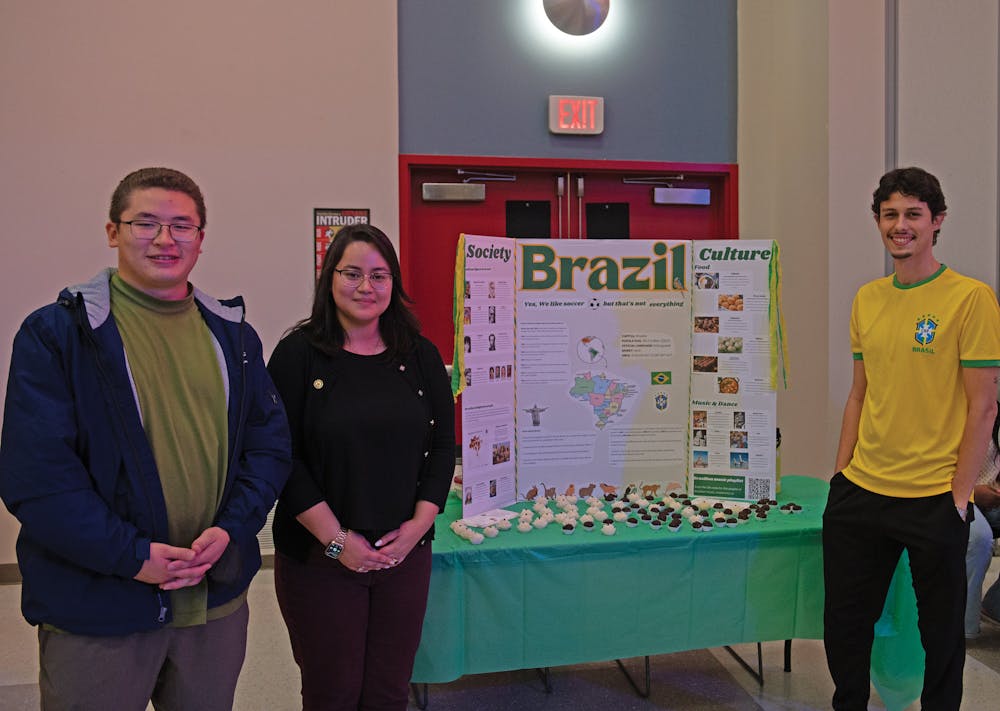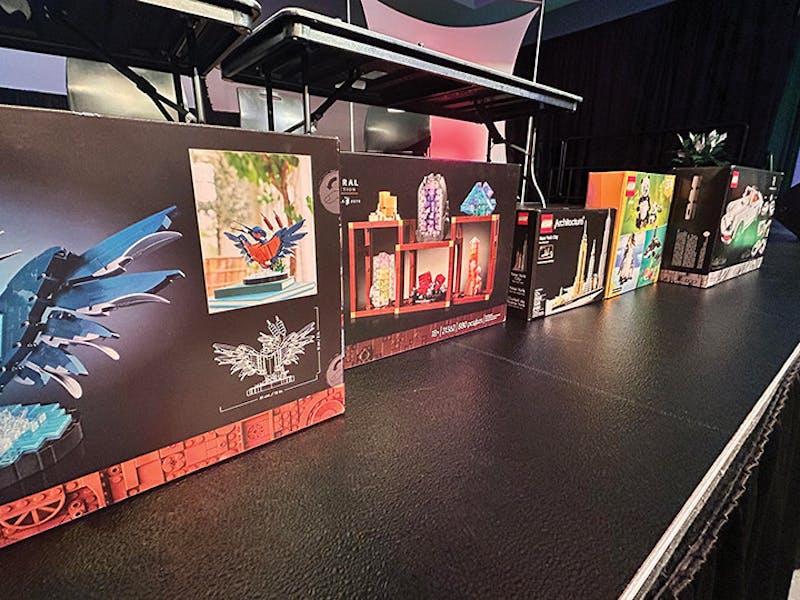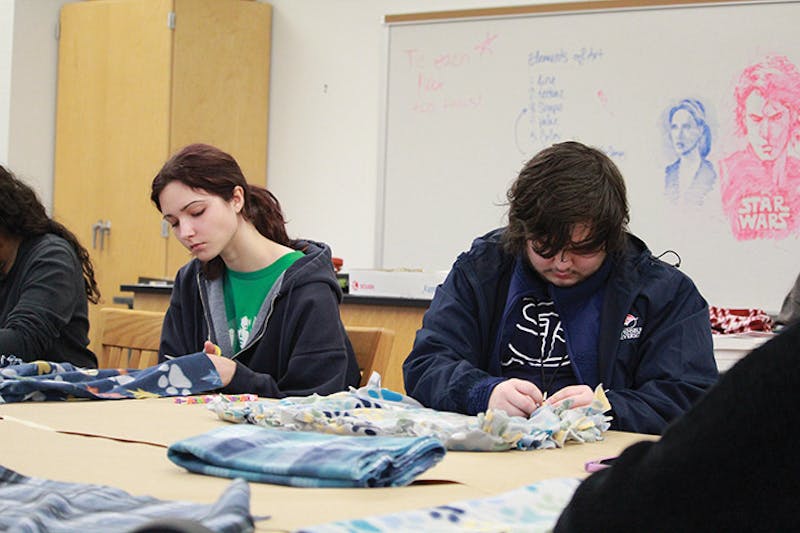Shippensburg University’s All Around the World event showcased a number of tables representing many different countries and cultural organizations, offering attendees an opportunity to explore the cultures and traditions.
The event, which was hosted by the Office of Inclusion, Belonging and Social Equity and the Center for Global Education, began with an energetic performance from the SU marching band playing a series of songs.
At the France table, participants could play a mock-game of Boule. In Boule, players roll metal balls, a boule, on a table to land as close to the cochonnet, a jack or extra small ball, as possible. Players throw the balls, and the player whose boule is the closest to the cochonnet wins the game.
The table that represented India highlighted key facts and statistics of the country, such as its population of around 1.46 billion people and most spoken language, Hindi. Attendees could learn about the current president of India, Droupadi Murmu, and how she is the second woman to hold office. India has an array of major holidays, such as Janmashtami, Ganesh Chaturthi, Navaratri and Dussehra, as well as many traditional foods like Pakora, Chaat and Vada Pav.
Spain’s table presented a wealth of photos and knowledge about the country, such as its population of 47 million people, popular languages spoken and the head of state, Pedro Sanchez. Posters of the Spanish flag and maps that outlined some of the major cities within the country, such as Madrid, Cordoba, Malaga and Barcelona, helped to showcase Spain’s history and geography.
Albania had a table full of facts, history and visuals. Albania’s capital city is Tirana, and the country has a population of about 2.8 million people. The main religions in Albania are Islam and Christianity. A famous tourist attraction in Albania is the Albanian Riviera along the Ionian Sea which features many famous beaches and towns.
The table that represented South Korea offered insight to the country’s cuisines, like Bibimbap and Bulgogi. There is also a Korean dessert called Bingsu, which is made of shaved ice. Traditional clothing of South Korea is called Hanbok, made from cloth, silk, hemp, ramie and other materials. The colors and patterns of these clothing are often dependent on age, status, occasion and more, and each have different significances. Another specialty of Korea is Korean-Pop, also known as K-Pop, which has become a widely popular genre in global culture.
Some of the information presented at the Mexico table included the types of vibrant music in Mexico, such as mariachi, banda, ranchera, pop and Mexican rock. A significant cultural feature of the collection included the significance of Dia de los Muertos, or Day of the Dead, where families honor the spirits of their loved ones beyond the grave in a celebration ritual of life. This is often done by buying gifts and decorating graves and altars to remember those before them both in public and private spaces.
Next was the Caribbean table, emphasizing some regions like Puerto Rico, the Dominican Republic and Cuba. The Caribbean has hundreds of islands that belong to the region.
Brazil’s table drew attention with its vibrant presentation and wealth of information. Inhabited by indigenous people prior, the Portuguese claimed the land in 1500, and the Empire became Rio de Janeiro in 1808. The Empire of Brazil declared its independence in 1822. As of 2022, Brazil’s population was 215.3 million people and is the largest country in South America.
Malu Takahashi, a student who was integral in the creation of the Brazilian table, said: “This event was a great opportunity to share about our culture and our upbringings with the campus community. The process was a lot of work, but it was fulfilling because we are sharing knowledge and culture with the student body.”
Other tables represented various organizations instead of countries, such as the Frederick Douglass Institute, the Resident Hall Association, the Peace Corps, Center for Global Engagement, the Multi-Ethnic Student Association, Asian American Culture, the African Student Association, Latino Student Organization and the Panhellenic Council at Shippensburg University.
One of the highlights of the event was the opportunity to sample traditional foods from different countries and regions. In the center of the event stood tables of food with cultural significance. Some of these samples were Swedish meatballs, chicken quesadilla cornucopias, beef empanadas, vegetable spring rolls, pot stickers and beef sticks.
“[I] loved learning about all different cultures in such a cool way,” one student attending the event said.
Being able to share cultural traditions with others is something that is not just reserved for diversity week but is a privilege we get to experience together and learn from all year round. Embracing differences fosters an inclusive society with a range of perspectives that enrich our lives with cultural diversity.
For more information on future events, visit the Office of Inclusion, Belonging and Social Equity.




The Slate welcomes thoughtful discussion on all of our stories, but please keep comments civil and on-topic. Read our full guidelines here.